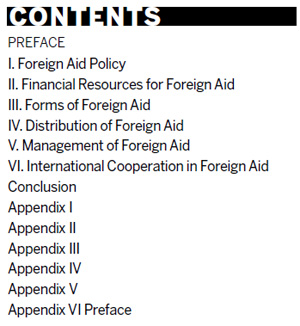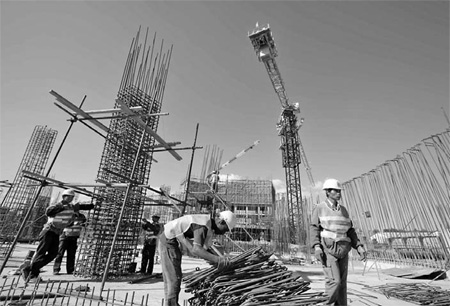Op-Ed Contributors
White paper: China's foreign aid
(China Daily)
Updated: 2011-04-22 08:02
 |
Large Medium Small |
|
|

Assistance to other developing nations with no political conditions attached indicates the country's fulfilling its obligations to international community
Editor's note: China's Information Office of the State Council issued a white paper on China's foreign aid in Beijing on Thursday. Following is the full text:
China is a developing country. Over the years, while focusing on its own development, China has been providing aid to the best of its ability to other developing countries with economic difficulties, and fulfilling its due international obligations.
In the 1950s, soon after the founding of the People's Republic of China, although it was short of funds and materials, China began to provide economic aid and technical assistance to other countries, and gradually expanded the scope of such aid. Since China adopted the reform and opening-up policies in the late 1970s, its economy has been developing rapidly, with the overall national strength growing notably.
|
||||
Adhering to equality and mutual benefit, stressing substantial results, and keeping pace with the times without imposing any political conditions on recipient countries, China's foreign aid has emerged as a model with its own characteristics.
I. Foreign Aid Policy
Course of development in foreign aid
China's foreign aid began in 1950, when it provided material assistance to the Democratic People's Republic of Korea (DPRK) and Vietnam, two neighboring countries having friendly relations with China. Following the Asian-African Conference in Bandung, Indonesia in 1955, the scope of China's aid extended from socialist countries to other developing countries, along with the improvement of China's foreign relations. In 1956, China began to aid African countries. In 1964, the Chinese government declared the Eight Principles for Economic Aid and Technical Assistance to Other Countries, the core content of which featured equality, mutual benefit and no strings attached, hence the basic principle for China's foreign aid was formulated.
In October 1971, with the support of other developing countries, China resumed its legal seat in the United Nations, established relations of economic and technical cooperation with more developing countries, and funded the Tanzania-Zambia Railway (TAZARA) and other major infrastructure projects. In this period, China overcame its own difficulties, and provided the maximum assistance it could afford to other developing countries in their efforts to win national independence and develop a national economy, thus laying a solid foundation for its long-term friendly cooperation with developing countries.
After the adoption of the policies of reform and opening-up in 1978, China's economic cooperation with other developing countries extended from economic aid to multi-form and mutually beneficial cooperation. China adjusted the scale, arrangement, structure and sectors of its foreign aid in accordance with its actual conditions. It strengthened its foreign assistance to the least developed countries, paid more attention to the economic and long-term effects of aid projects, and provided aid in more diversified and flexible ways. To consolidate the achievements of existing productive projects, China conducted multi-form technical and managerial cooperation with recipient countries, such as managing aid projects on behalf of recipient countries, lease management and joint ventures. After adopting the aforesaid cooperation models, some already-completed productive projects accomplished more than traditional technical cooperation in improving enterprise management and production level. Through adjustment and consolidation, China's foreign aid embarked on a development road which better suit China's actual conditions and the needs of recipient countries.
In the 1990s, in the course of the shift from the planned economy to the socialist market economy, China took a series of measures to reform its foreign aid mechanism, focusing on diversifying the sources and means of funding. In 1993, the Chinese government set up the Foreign Aid Fund for Joint Ventures and Cooperative Projects with parts of the interest-free loans repaid to China by developing countries. The fund was mainly used to support Chinese small and medium-sized enterprises to build joint ventures or conduct cooperation with the recipient countries in the production and operation spheres. In 1995, China, via the Export-Import Bank of China, began to provide medium- and long-term low-interest loans to other developing countries, effectively expanding the funding sources of its foreign aid.
| 分享按钮 |




